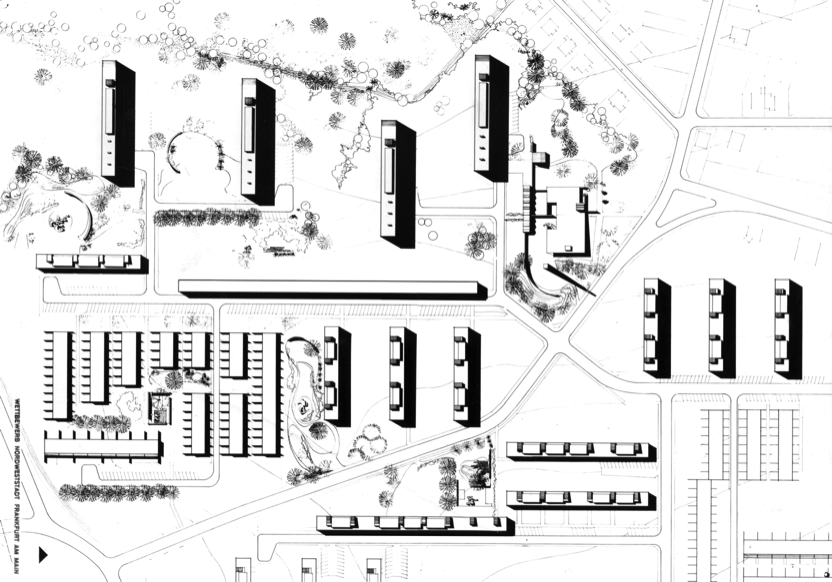1

Nordweststadt
Frankfurt am Main, Germany
The competition for the Nordweststadt area of Frankfurt, Germany, 13 years after the end of WWII, is one of many competitions to rebuild neighborhoods that had been substantially destroyed during the war. The major debate about their development divided into two positions: to reconstruct buildings and the city as it existed before the war, or to take advantage of a better understanding of how neighborhoods work, both functionally and sociologically in modern society, utilize new developments in building systems and to recognize the substantial developments in architecture. While there was substantial backing for the former, and there are many instances of it, including portions of the center of Frankfurt, most new developments took the latter approach. The Finger-Lee entry, which included Seligmann as a participant, clearly asserted the latter stance.
The architecture and planning is an amalgam of building types already proposed by others. The long building near the center could be considered at reference to the Mies van der Rohe building at Weissenhofsiedlung in Stuttgart of 1927, a configuration that would appear much later in Seligmann’s design for the Elm Street housing in Ithaca. The four tall slab buildings and six lower ones would appear to be derived from Le Corbusier’s Unité d'Habitation housing projects, the first in Marseilles, France, which opened in 1953. The plans and sections reveal a much closer affinity to the Narkomfin block of housing, by Ginzburg and Milinis, built in Moscow in 1928. The building plans show a single-loaded corridor which permits through ventilation, a highly desirable component of low cost housing. They are oriented so that their major facades face east and west. In the southeast corner are townhouse units, each with extended walls, producing a small terrace or garden. This type, called matte housing, will reappear as the major portion of the Ithaca housing project, treated as terrace housing. Seligmann frequently referred to them as matte housing. The remainder of the site is treated as green space, open parks. No doubt Seligmann learned many lessons from this competition.
Competition Honorable Mention
In association with Arnold Finger and Kermit J. Lee, Jr.
1958